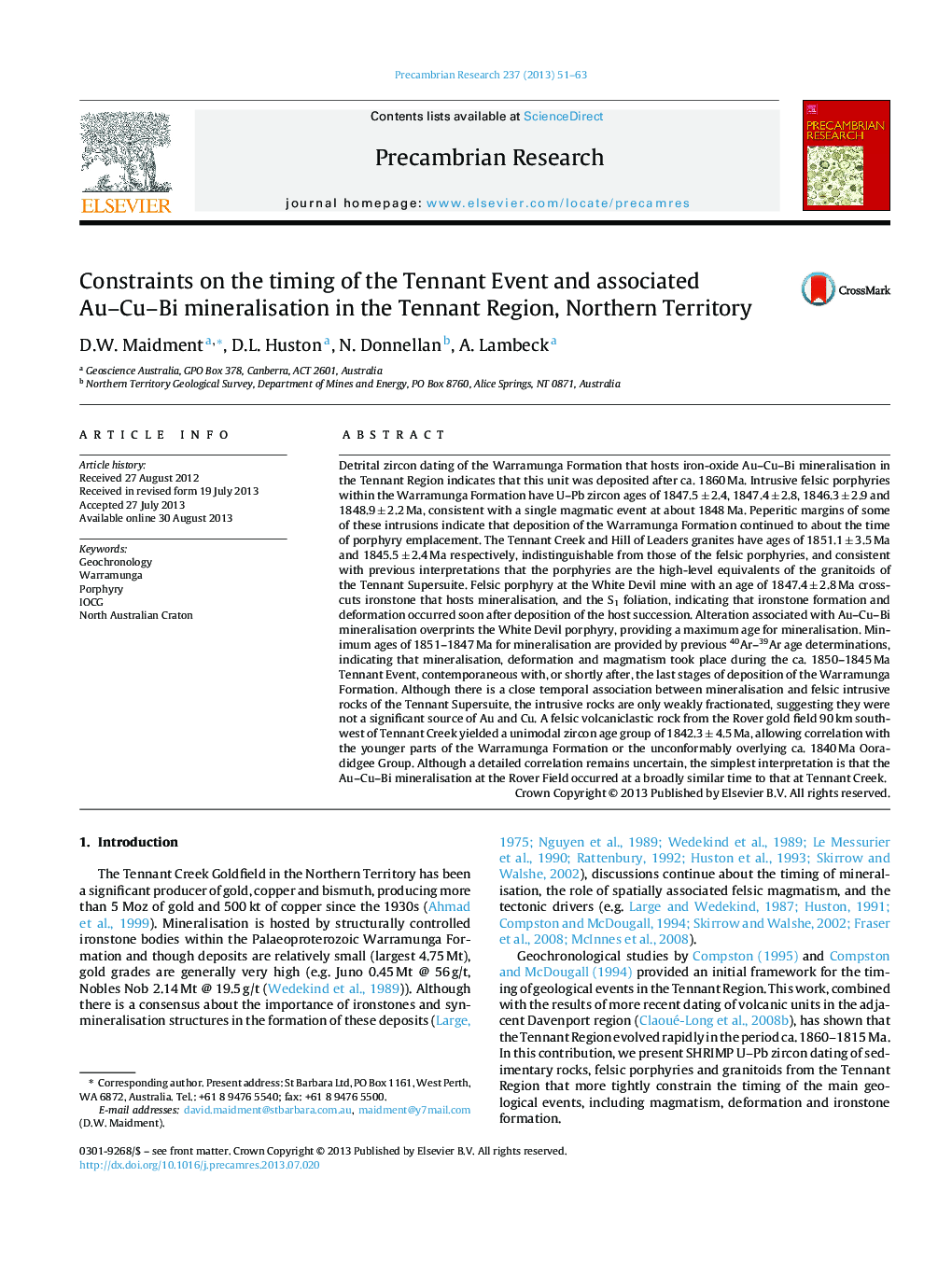| Article ID | Journal | Published Year | Pages | File Type |
|---|---|---|---|---|
| 4723259 | Precambrian Research | 2013 | 13 Pages |
Abstract
Detrital zircon dating of the Warramunga Formation that hosts iron-oxide Au-Cu-Bi mineralisation in the Tennant Region indicates that this unit was deposited after ca. 1860 Ma. Intrusive felsic porphyries within the Warramunga Formation have U-Pb zircon ages of 1847.5 ± 2.4, 1847.4 ± 2.8, 1846.3 ± 2.9 and 1848.9 ± 2.2 Ma, consistent with a single magmatic event at about 1848 Ma. Peperitic margins of some of these intrusions indicate that deposition of the Warramunga Formation continued to about the time of porphyry emplacement. The Tennant Creek and Hill of Leaders granites have ages of 1851.1 ± 3.5 Ma and 1845.5 ± 2.4 Ma respectively, indistinguishable from those of the felsic porphyries, and consistent with previous interpretations that the porphyries are the high-level equivalents of the granitoids of the Tennant Supersuite. Felsic porphyry at the White Devil mine with an age of 1847.4 ± 2.8 Ma cross-cuts ironstone that hosts mineralisation, and the S1 foliation, indicating that ironstone formation and deformation occurred soon after deposition of the host succession. Alteration associated with Au-Cu-Bi mineralisation overprints the White Devil porphyry, providing a maximum age for mineralisation. Minimum ages of 1851-1847 Ma for mineralisation are provided by previous 40Ar-39Ar age determinations, indicating that mineralisation, deformation and magmatism took place during the ca. 1850-1845 Ma Tennant Event, contemporaneous with, or shortly after, the last stages of deposition of the Warramunga Formation. Although there is a close temporal association between mineralisation and felsic intrusive rocks of the Tennant Supersuite, the intrusive rocks are only weakly fractionated, suggesting they were not a significant source of Au and Cu. A felsic volcaniclastic rock from the Rover gold field 90 km southwest of Tennant Creek yielded a unimodal zircon age group of 1842.3 ± 4.5 Ma, allowing correlation with the younger parts of the Warramunga Formation or the unconformably overlying ca. 1840 Ma Ooradidgee Group. Although a detailed correlation remains uncertain, the simplest interpretation is that the Au-Cu-Bi mineralisation at the Rover Field occurred at a broadly similar time to that at Tennant Creek.
Related Topics
Physical Sciences and Engineering
Earth and Planetary Sciences
Geochemistry and Petrology
Authors
D.W. Maidment, D.L. Huston, N. Donnellan, A. Lambeck,
